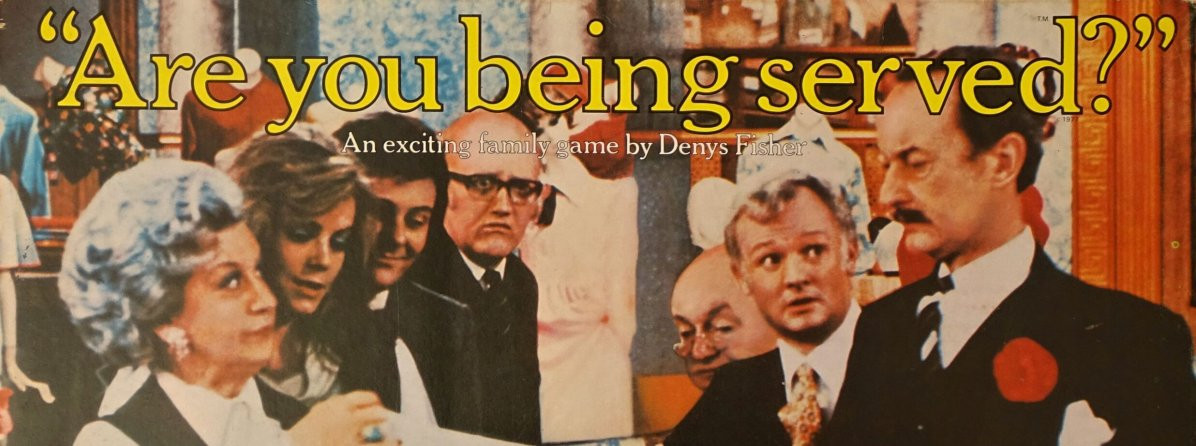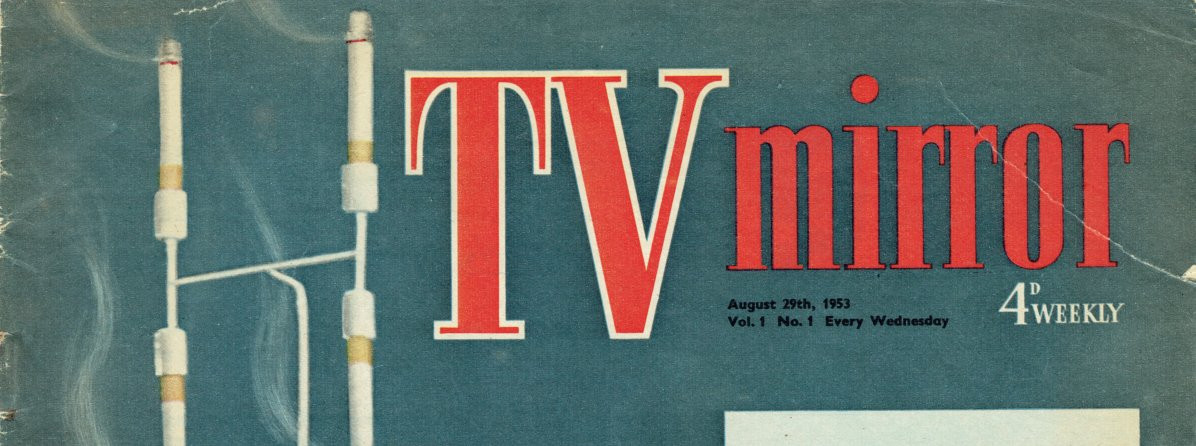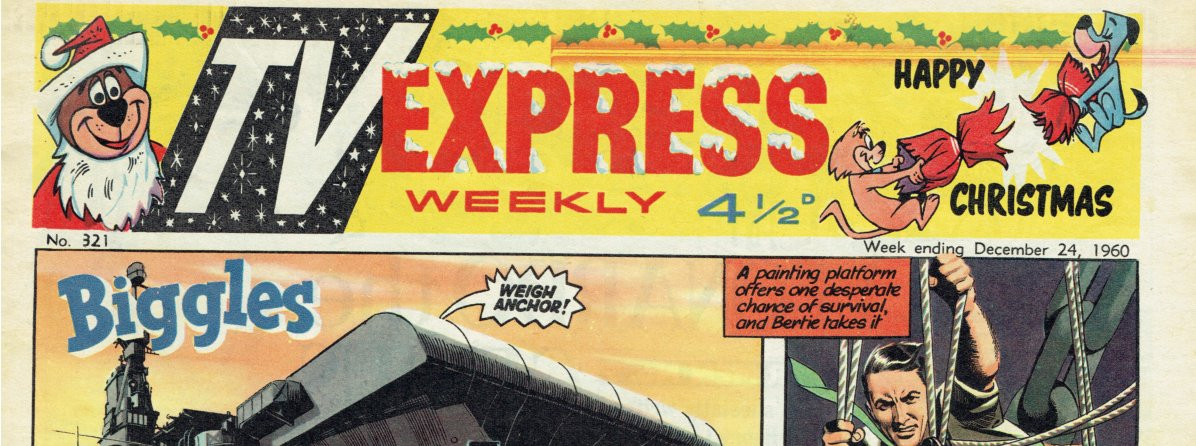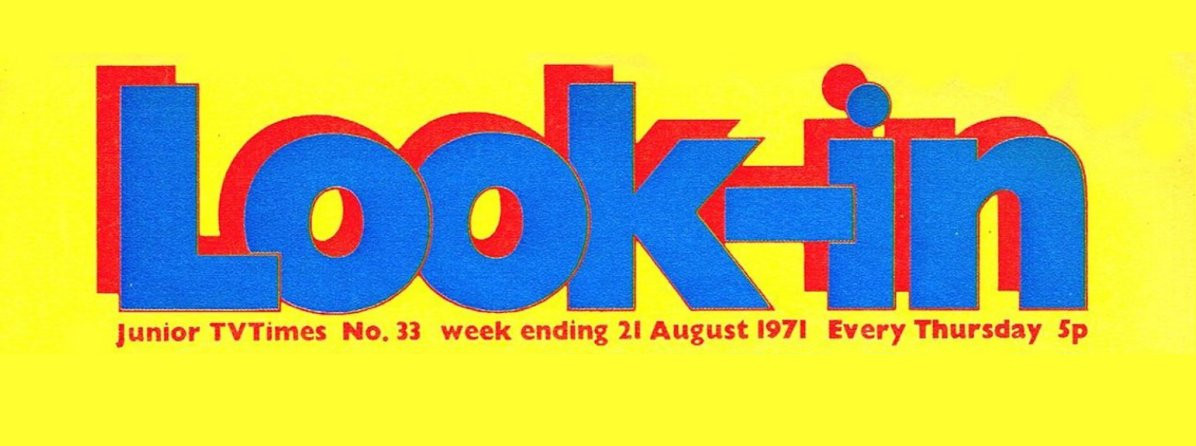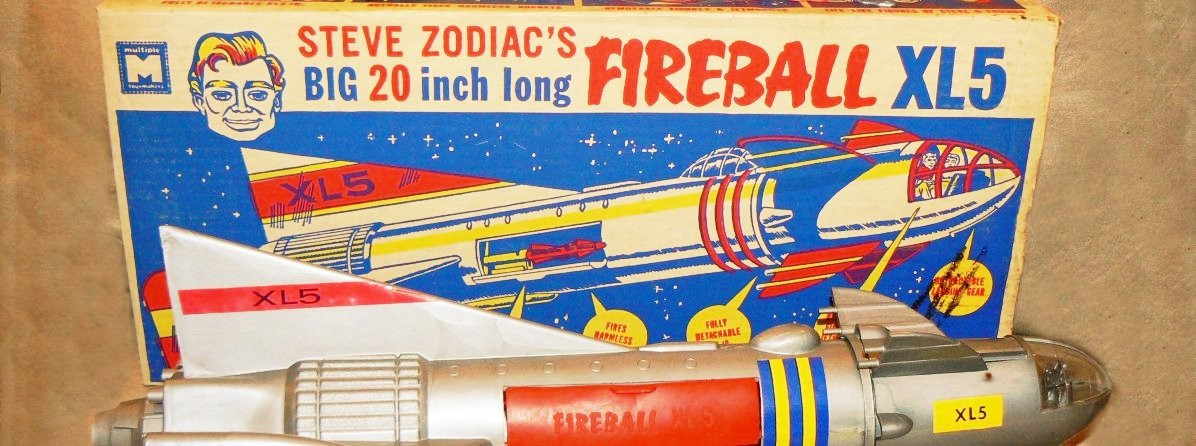
TV Tie-Ins: Games
Article by Brian Slade
In the modern world of brands crossing over for sponsorship deals, it’s a common thing to see TV shows and movies appearing in a whole host of places to jump on their marketing bandwagon, be it broadband deals or throwaway plastic toys at fast food chains. Something equally common is that if it’s a big enough brand, it will inevitably appear on an incarnation of Monopoly. Dr Who, Star Wars, Star Trek, Eastenders, Gremlins, Only Fools and Horses – the list is almost endless, as would be the size of the house needed to store them all!
Monopoly isn’t the only guilty party – the likes of Cluedo and Trivial Pursuit jump on board too – but back in the days of two-channel television, manufacturers were a little more imaginative with the television tie-ins when it came to switching off the box and enjoying some family game time. So, what follows are just some of the older gems that tied in with our favourite stars and shows.
David Croft was the man with the Midas touch as far as television sitcoms went during the 70s and 80s. Along with writing partners Jeremy Lloyd and Jimmy Perry, he created some of the most iconic comedies in television history. However, he was also very astute in terms of maximising the draw of his shows. It was not uncommon to see his shows sell out theatres when put onto the stage…the likes of Dad’s Army, It Ain’t Half Hot Mum, Hi-de-hi!, Are You Being Served? and ‘Allo, ‘Allo were all given the stage treatment to great success. However, Croft’s stable of shows inevitably came along with board game tie-ins as well. Without the lazy link to existing successful games, they each carried their own design, style and level of fun.
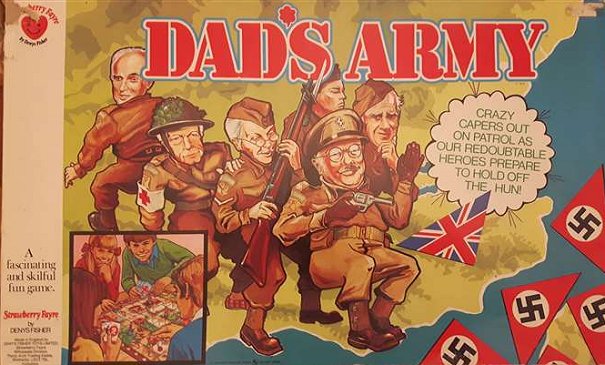
Denys Fisher’s Strawberry Fayre brand was a popular home for such games, with Dad’s Army the first Croft production up. Players would need to get two of their men to a particular place on the board before anybody achieved the same with theirs. In a way it was simply a glorified Ludo, but the characters tied-in well, each with their familiar home, such as Jones at the butcher shop, Captain Mainwaring and Wilson at the bank and Godfrey back at his cottage. Warden Hodges was understandably used as an interfering piece, able to be switched with other pieces to help or hinder progress. The artwork was very familiar, with the arrowhead of the Nazi symbol used as bombs on the board, whose effect can only be undone by the equivalent Union Jacks, replicating the famous opening credits of the show. It was a simple game but set a tone for the gentle fun games that would follow from the Croft world.
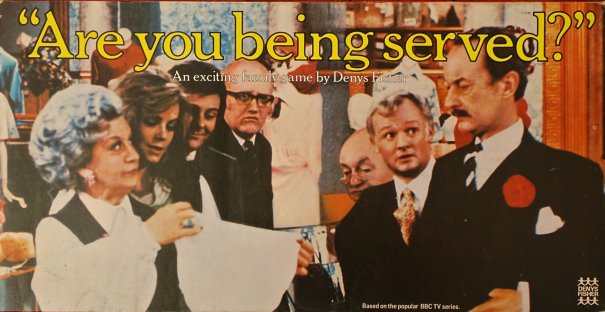
Are You Being Served? may have been a successful thorn in the BBC’s side, but it also had the pleasure of a board game. Given the show was almost always entirely set on the shop floor over its ten series, it was no surprise that the board was of the shopfloor plan. This game was more of a variation on build-a-beetle as players compete to leave the shop having purchased a full set of garments from Grace Brothers – a hat, top, lower garment and shoes. Each player, or customer, could only carry one garment at a time and had to attend both the fitting room and one of the sales staff before completing a purchase and moving on to their next garment – all the time hoping they don’t have to deal with Captain Peacock, permanently sneering at the centre of the floor, being sent to Mr Rumbold or lose a garment to the store detective.
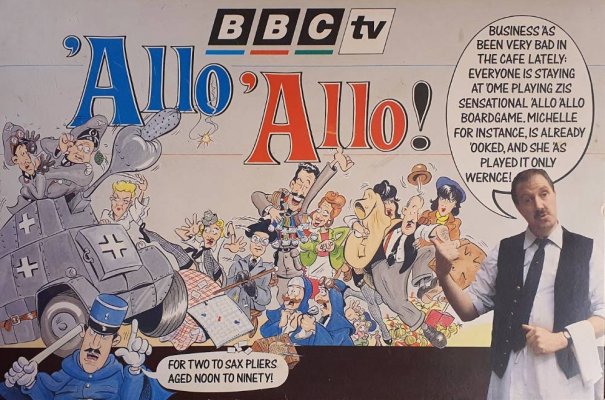
‘Allo ‘Allo took its turn much later in 1989. For this one, players had to choose whether to join Rene in the French Resistance or align themselves with the Germans. The goal of the Resistance is of course to smuggle Carstairs and Fairfax, the two airmen, back over the border, while the Germans have to try and capture them before the Resistance succeeds.
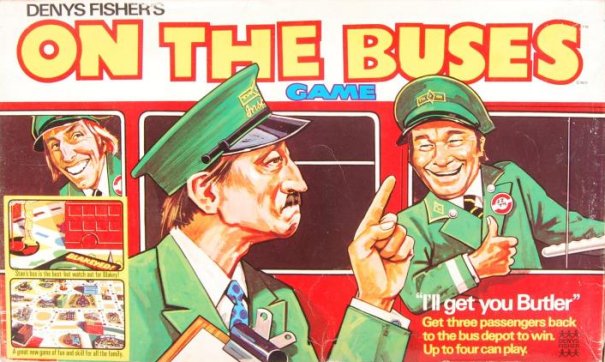
Not to discriminate between the BBC and commercial channels, Denys Fisher also dipped into ITV territory on occasion. The hugely popular On the Buses had its own game which was essentially a mean variation of Snakes and Ladders, with bus tickets instead of dice. On a clockwise circuit, players had to try and get a trio of passengers collected from bus stops and back to the bus station before anybody else. A trio of buses were moved along their allotted route by players playing tickets, giving them the opportunity to make their opponents’ passengers get stranded or miss their stop and having to go round the block again. One of the buses was of course Stan’s bus, which consistent with Stan’s character in the show, was a law unto itself, travelling anywhere and everywhere…unless of course he got Blakeyed and was forced to ditch all passengers!
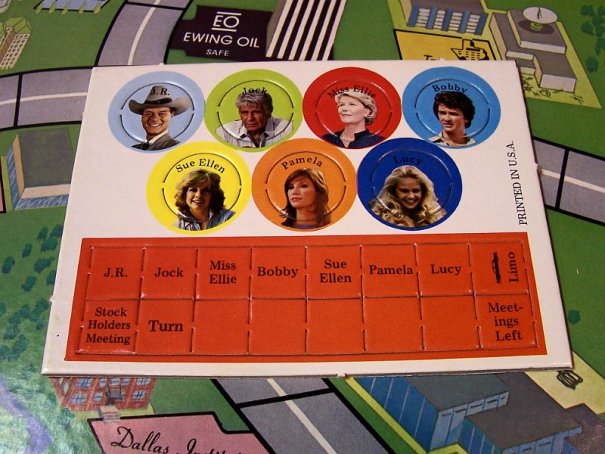
American shows also received the board game treatment in television golden days. Dallas was of course the hottest show on television the world over at its peak, and its board game came not in a conventional box but in the form of a gatefold album sleeve. No great surprise as to the intentions of the game – as one of the Ewing family, wrestle the presidency of Ewing Oil from competing players and emerge with the largest fortune. Across five stockholders’ meetings (woe betide anybody who didn’t get back to Southfork in time for the meeting!) at certain times in the game, players were given five minutes to negotiate and bribe other players to try and gets presidential votes in the company…and then when it came to voting time, all of those deals were non-binding as the rules encouraged corruption, blackmail and threats to reflect the in-family squabbles that dominated the television show.
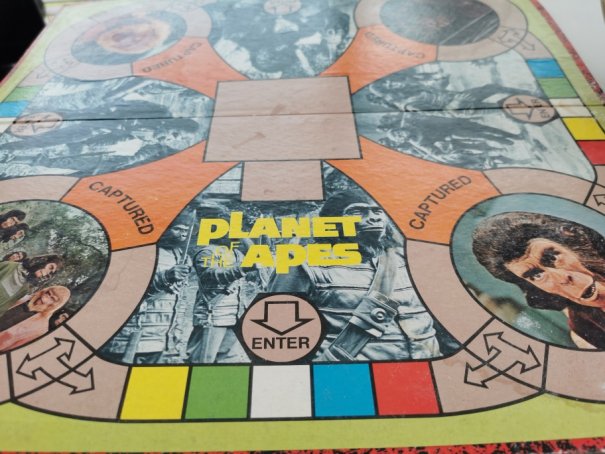
Planet of the Apes was another popular 1970s show that surfaced in board game form. Far from the complicated goings on in Dallas, this was a far more simplistic game. Part Coppit, part Moustrap, the role of dice took players’ set of four pieces around the board and depending on their dice roll, they could move not only their own pieces, but those of their competitors in the hopes that their foe would be captured. In the case of this game, capture meant that playing piece was placed on top of the game’s cage, awaiting whether the contraption would open when the button was pressed and condemn their human, or whether it would remain closed and prolong the hope of rescue. With four pieces per player, those competing were simply aiming to be the last surviving human on Planet of the Apes, all dependent on the cage contraption working better than the cage in Moustrap!
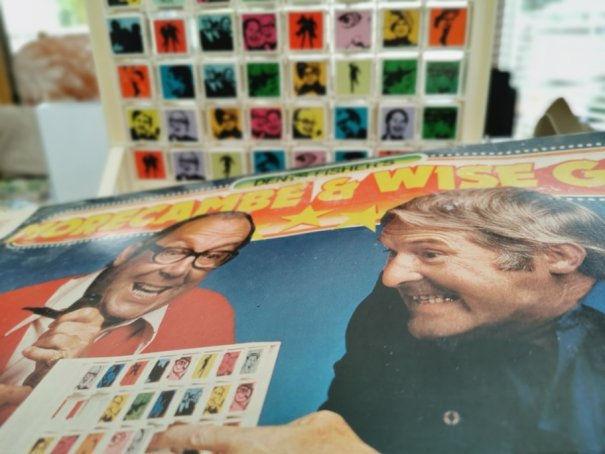
No board game summation from the decades of television’s finest would be complete without the iconic gentleman by the name of Morecambe and Wise. Ok, it’s a stretch to call it a board game, but for Eric and Ern’, allowances should always be made. Just as others presented before you were loose variations on classic games, Eric and Ern’s was closer to Connect 4 than any other. The difference here is that the plastic cage between the competing players was already fully completed, each with a block containing a picture of one or other of the boys in various poses. Four separate blocks represented dice and upon rolling all four, the two players had to try and push out two blocks for each of the four pictures displayed on the dice before their opponent did so. Each dice roll would see fewer blocks of each picture to remove and after the final frantic rush, whichever player had collected the most blocks would be the winner.
It's safe to say that the television variants of board games mostly from five decades ago were of a much simpler theme, always geared towards good old fashioned family fun (with the exception of the dastardly goings on in Dallas!) There were plenty of others to get the same treatment. Hi-de-hi! fans could compete in an array of holiday camp games, Bruce Forsyth’s Generation Game could see various cup and ball efforts timed to beat the opposition, and such American classics as Columbo and the A-Team even got in on the act. Simpler these games may have been, but much like the shows they depicted, they represent a gentler time with a more original and innocent approach to entertainment – and if you can find them, they can still provide a great deal of fun.
